AiPrise
12 min read
October 14, 2025
Comprehensive Guide to Embedded Banking and Finance

Key Takeaways










Embedded banking is transforming how businesses offer financial services, becoming one of the fastest-growing trends in fintech today. It is set to revolutionize finance, with the global market expected to skyrocket to $148 billion in 2025 and grow at a staggering CAGR of 31.5% through 2034.
Simply put, embedded banking integrates banking services, like payments, lending, and account management, directly into non-bank platforms, eliminating friction for customers and businesses alike.
It solves major pain points such as slow processes, poor user experience, and lack of personalization that traditional banking struggles with.
This blog covers practical use cases where companies solve financial challenges and get new growth opportunities. Knowing these examples helps you implement successful embedded banking strategies that engage customers and deliver real business value.
Key Takeaways
- Embedded banking integrates financial services directly into platforms, enhancing user experience and unlocking new revenue streams without requiring businesses to become licensed banks.
- Partnering with Banking-as-a-Service (BaaS) providers and compliance specialists like AiPrise enables seamless API-based integration, regulatory adherence, and risk management.
- AI-driven identity verification and automated compliance reduce onboarding time, mitigate fraud, and ensure continuous monitoring in real time.
- Embedded banking promotes customer engagement, operational efficiency, and competitive differentiation by offering convenient, contextual financial products.
What Is Embedded Banking?
Embedded banking refers to the integration of full banking and financial services directly within non-bank digital platforms and applications, allowing users to access financial functionalities without leaving those ecosystems.
Unlike traditional banking, where customers must interact with a separate financial institution interface, embedded banking seamlessly weaves banking capabilities, such as payments, lending, account management, and card issuance, into everyday digital experiences.
It is important because it transforms complicated, fragmented financial tasks into smooth, instant experiences that keep customers engaged and businesses thriving.
Here are the key challenges that embedded banking solves:
- Frictionless Customer Experience: No more toggling between separate apps or slow payment steps. Customers can pay, borrow, or manage funds right where they shop, work, or socialize.
- Accelerated Financial Operations: Lending decisions, onboarding, and payments are automated, slashing wait times from days to seconds.
- Expanding Financial Access: Embedded banking opens doors for underserved markets by bringing banking services to apps and platforms they already trust.
- Insightful Data Integration: Merging financial data with user behavior lets businesses personalize offers and manage risks smarter and faster.
With a clear understanding of what embedded banking is and the problems it solves, let's explore the specific financial products that provide these simplified experiences inside your favorite apps and platforms.
Types of Financial Products in Embedded Banking
Embedded banking integrates key financial products directly inside apps and platforms you already use, creating seamless user experiences and driving business growth. Here’s a breakdown of the main embedded banking products:
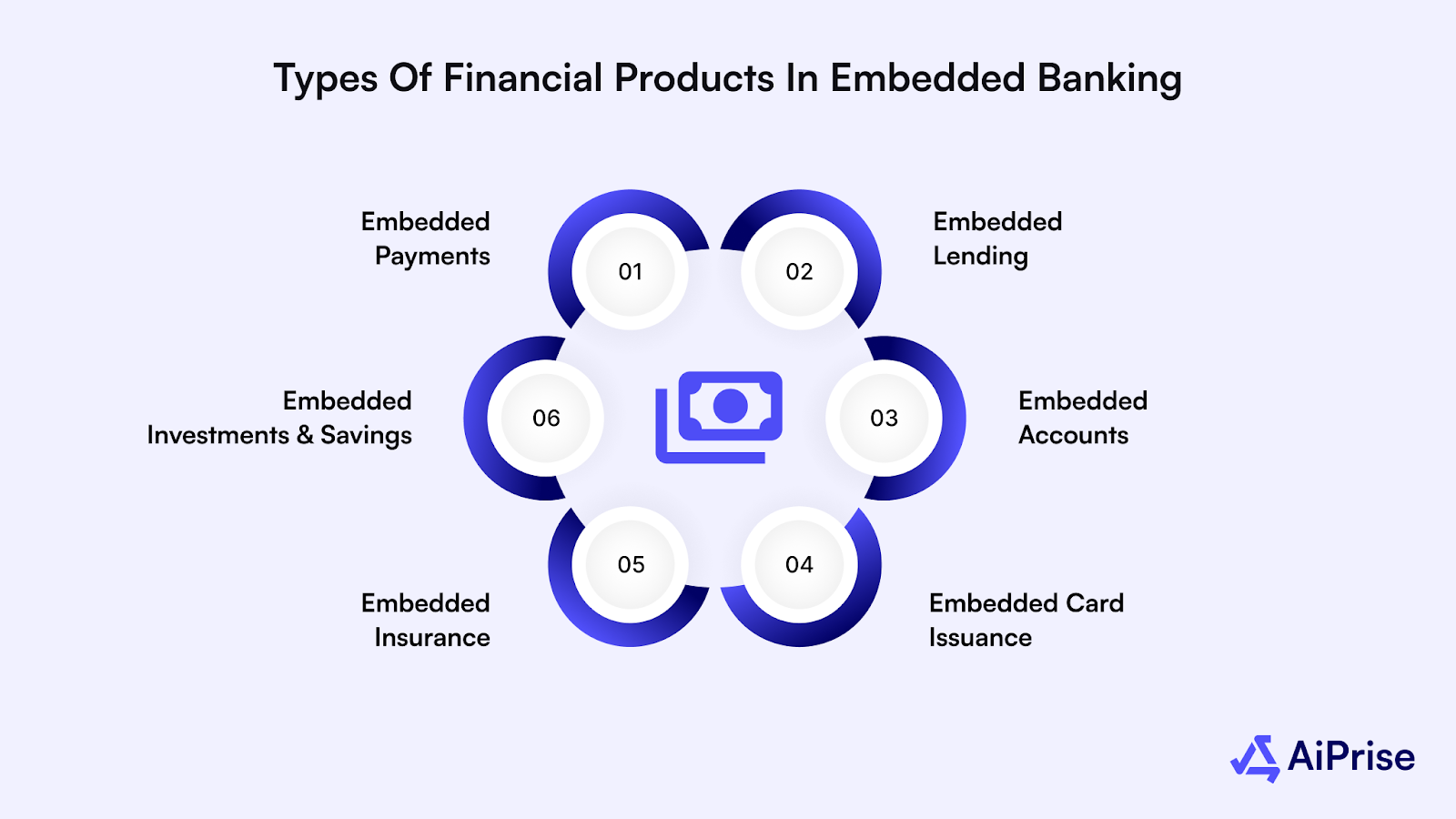
1. Embedded Payments
This feature allows users to make instant payments directly within a platform, eliminating the need to switch to another app or website. It includes digital wallets, card payments, and peer-to-peer transfers.
2. Embedded Lending
With embedded lending, businesses offer instant credit options such as Buy Now, Pay Later (BNPL) or microloans right where customers shop or use services. These loans are approved automatically through technology that assesses credit in real time, helping customers buy what they need while boosting sales.
3. Embedded Accounts
Embedded accounts provide users digital bank accounts inside an app or platform for managing money. Customers can check balances, transfer funds, and sometimes access prepaid or virtual cards. This reduces the friction of opening separate bank accounts and ties financial needs directly to the platform experience.
4. Embedded Card Issuance
Platforms can issue their own branded debit or credit cards, either physical or virtual, that link to embedded accounts. These cards give users control over spending and often include features like rewards, without requiring traditional banking relationships.
5. Embedded Insurance
Insurance products are offered directly in the purchasing flow, such as product warranties or travel insurance. This instant access to coverage is convenient and builds consumer trust.
6. Emerging Products: Embedded Investments & Savings
Some platforms now enable customers to invest or save automatically within their app. This could be automated savings tools or easy access to investment portfolios, making these financial products more accessible and effortless.
Also Read: Comprehensive Guide to AML Compliance in FinTech
Having explored the key financial products embedded banking offers, let's now understand how these services actually operate behind the scenes.
How Does Embedded Banking Work?
Embedded banking operates by integrating banking capabilities directly into non-financial digital platforms through advanced technology and strategic partnerships. This integration allows users to perform banking functions such as payments, lending, and account management without leaving the host app or website.
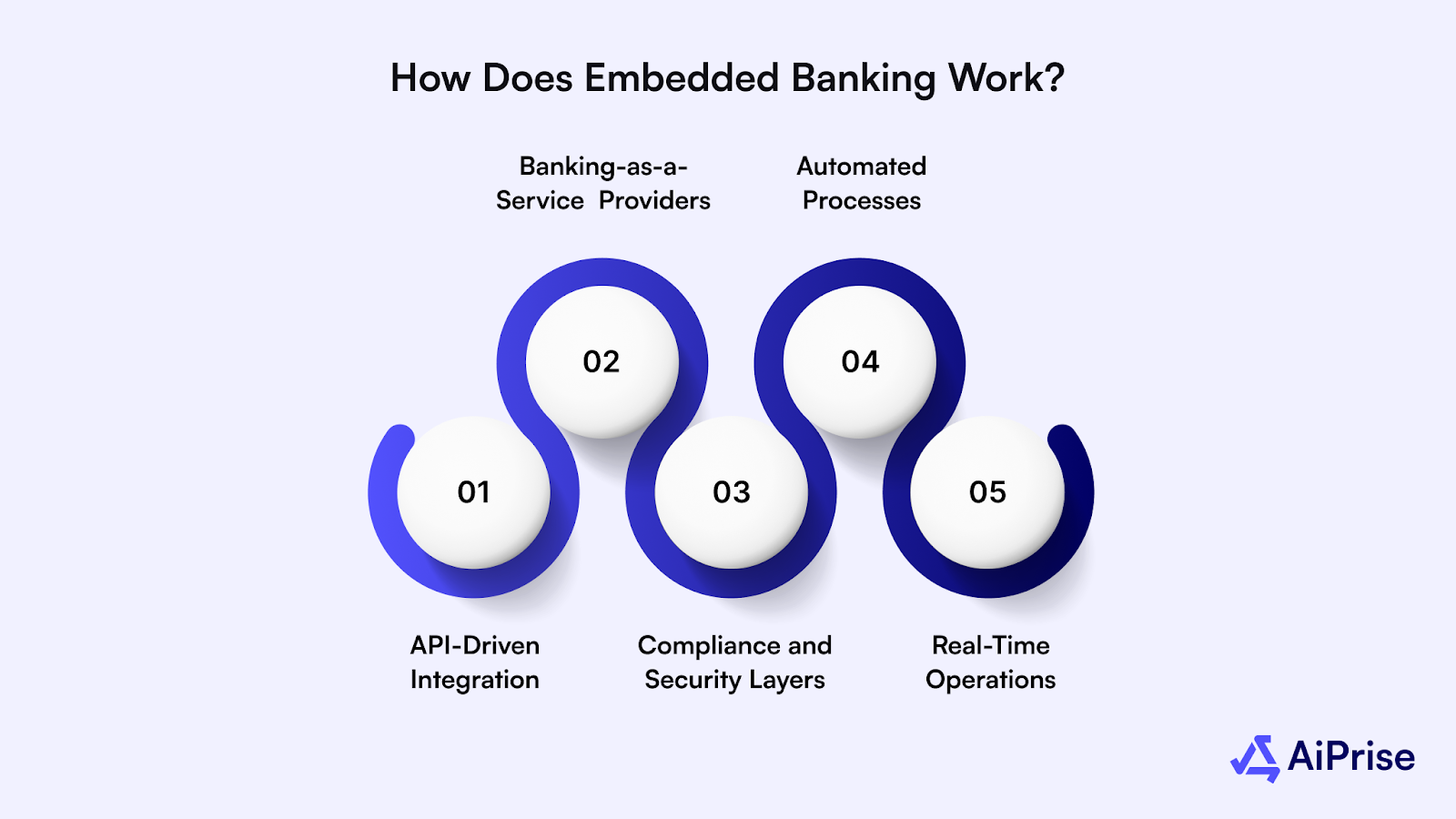
Here's a detailed explanation of the key components and embedded banking workflow:
1. API-Driven Integration
Platforms use Application Programming Interfaces (APIs) to connect their user interfaces with banks’ core systems. APIs enable real-time data exchange for transactions, account info, and credit decisions.
2. Banking-as-a-Service (BaaS) Providers
Many businesses partner with BaaS platforms that provide compliant banking infrastructure, simplifying access to regulated financial services without building banks themselves.
3. Compliance and Security Layers
Embedded banking solutions embed regulatory compliance, data encryption, identity verification, and fraud detection seamlessly within the user experience to meet strict financial regulations.
4. Automated Processes
Lending decisions, payment settlements, and account reconciliations are automated through software, reducing manual delays and errors.
5. Real-Time Operations
Core banking functions like balance checks and fund transfers happen instantly, ensuring a smooth, frictionless experience for users.
So, if you are using a ride-hailing app that pays drivers instantly after rides, the platform will send your payment request via secure APIs to its banking partner.
This partner will provide the infrastructure to process payments. The BaaS provider checks your account and processes payments instantly, all without leaving the app.
Also Read: How Businesses Can Benefit from Free KYC Verification
Connecting theory with practice, let's explore how embedded banking is transforming industries across the board.
Real-World Embedded Banking Examples by Industry
The embedded banking market is diverse, spanning industries from e-commerce and ride-sharing to insurance and SaaS platforms.
Here’s how different sectors use embedded financial products to create seamless experiences and get new revenue sources.
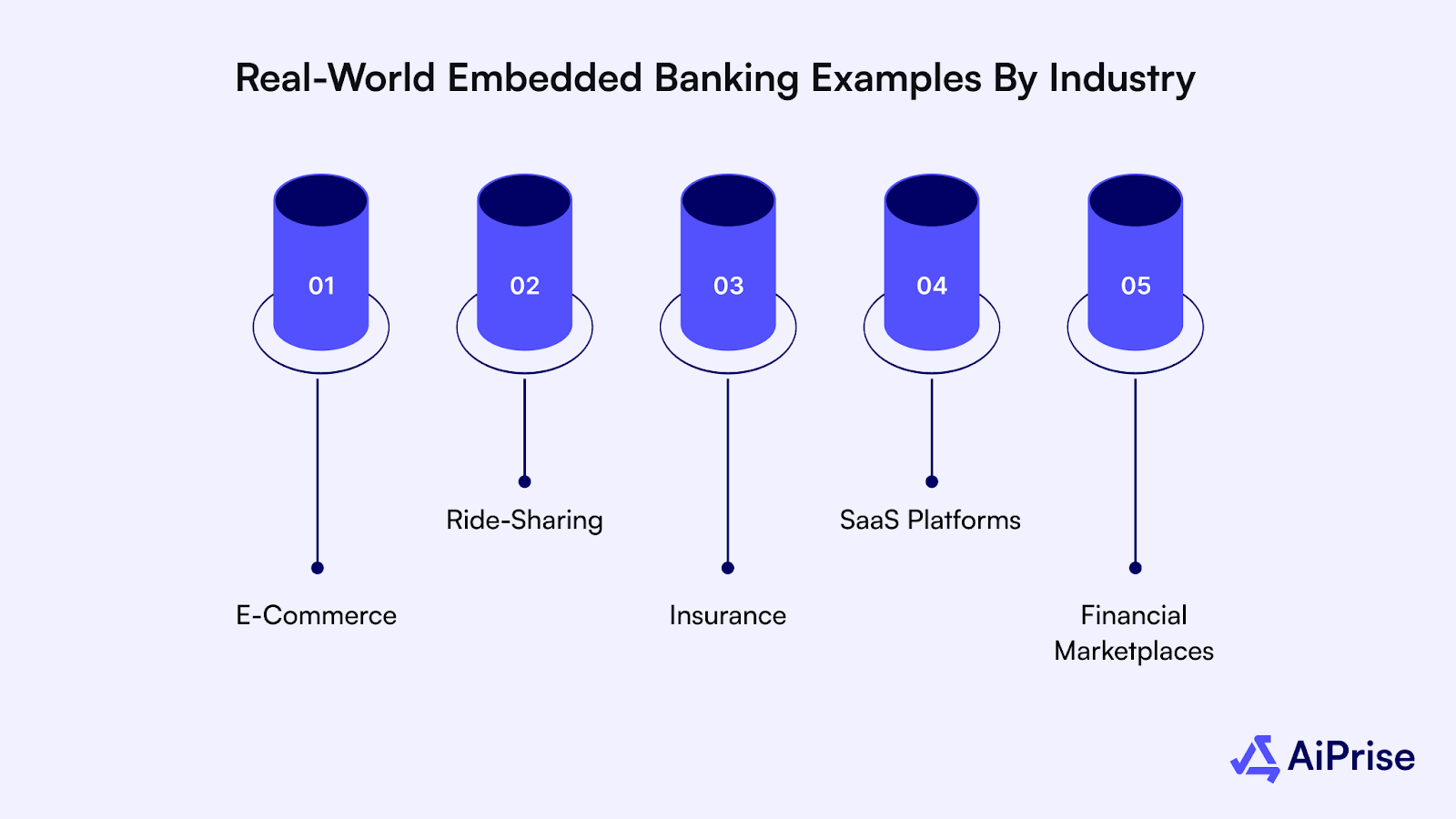
E-Commerce
Many online marketplaces now integrate banking services directly into their platforms. For instance, Shopify offers Shopify Balance, a digital account that enables merchants to receive faster payments and issue their own virtual cards, streamlining cash flow and operations.
Ride-Sharing
Platforms like Uber embed banking solutions by providing drivers with instant payouts via prepaid cards linked to embedded accounts, reducing waiting times and improving driver satisfaction.
Insurance
Companies like Apple collaborate with partners such as Asurion to offer embedded insurance plans like AppleCare+ at the point of product purchase, simplifying the process and boosting satisfaction.
SaaS Platforms
Vertical SaaS providers now embed banking services, such as account creation, card issuance, and payment processing, within their platforms, enabling small and medium-sized businesses to manage their finances without juggling multiple solutions.
Financial Marketplaces
Platforms such as Solaris SE embed BaaS technology to enable large companies and SMEs to offer tailored banking services, ike savings accounts and credit products, under their own branding, providing a frictionless experience for users.
Having seen how embedded banking is applied across industries, let's have a look at the advantages it delivers to businesses aiming to grow and innovate.
Business Benefits of Embedded Banking
Embedded banking offers transformative benefits that extend beyond improving customer experience. It provides new revenue streams, reduces operational costs, and helps businesses gain competitive advantages by weaving financial services into their product offerings.
Below are listed detailed business benefits:
- Enhanced Customer Engagement and Loyalty: Embedded banking removes friction by embedding financial services directly into the user journey, increasing satisfaction and repeat usage.
- New Monetization Opportunities: By offering lending, payments, or insurance products within their platforms, businesses create additional revenue layers beyond their core offerings.
- Operational Efficiency and Cost Reduction: Automation of financial workflows reduces manual processes, errors, and overhead costs related to payment reconciliation or credit underwriting.
- Better Data Insights and Personalization: Integrating banking data with platform analytics allows businesses to deliver personalized financial products and manage risk more effectively.
- Market Differentiation and Competitive Edge: Offering embedded banking features can set a company apart by providing users with convenient, all-in-one solutions.
It's also important to address the hurdles and misunderstandings that could hold companies back from adopting this transformative technology.
Common Challenges in Embedded Banking
Embedded banking holds immense promise, but businesses often face misconceptions and practical challenges when integrating it. Recognizing these upfront can help you plan effectively and avoid common pitfalls.
Below are common challenges around embedded ranking with solutions to address them:
- Integrating with legacy systems is difficult and costly.: Complex existing IT infrastructures can complicate integration, but modular BaaS platforms with API-first design streamline connectivity and reduce technical debt.
- Handling regulatory requirements is confusing and time-consuming: Financial regulations differ by region and evolve rapidly; partnering with specialized compliance experts and automated monitoring tools mitigates risk effectively.
- Ensuring a seamless user experience is challenging: Without careful UI/UX design and comprehensive user journey testing, embedded services can feel disjointed or confusing to customers.
- Maintaining operational reliability requires strict infrastructure: Real-time transactions and 24/7 availability mandate scalable cloud infrastructure and redundancy plans to prevent downtime and maintain trust.
Handling complex and evolving regulatory requirements can drain resources and create risk. AiPrise addresses this by offering an AI-powered compliance suite that automates KYC/KYB, AML screening, and sanctions monitoring across 5,000+ global watchlists.
Building on the challenges and opportunities of embedded banking, the next crucial step is understanding how to integrate this powerful technology into your business successfully.
How to Implement Embedded Banking in Your Business
Implementing embedded banking involves more than adding features; it requires strategic planning, technology integration, and compliance management to deliver financial services that truly improve your platform.
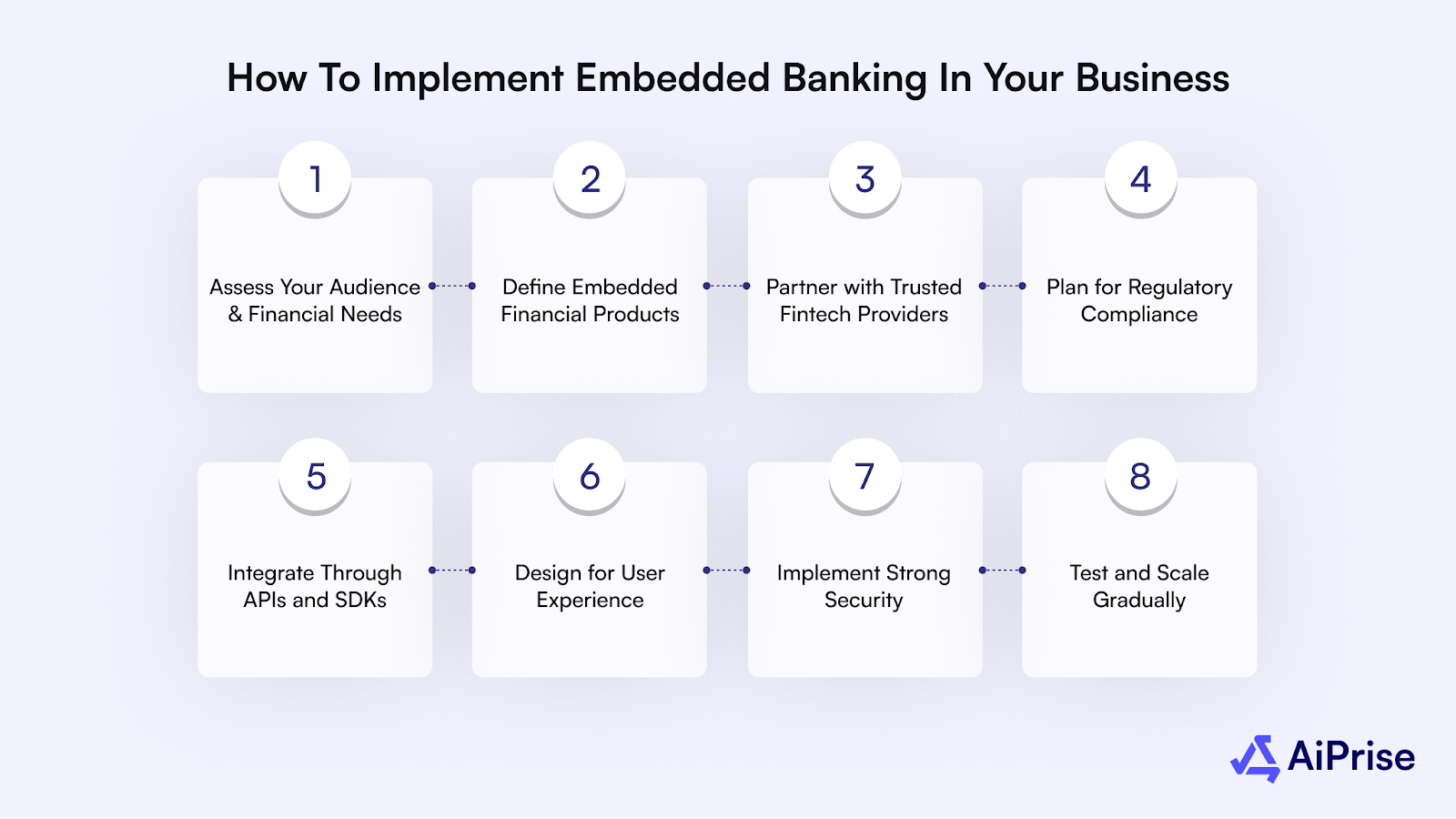
Essential points to keep in mind while implementing embedded banking are:
Assess Your Audience and Financial Needs
Begin by identifying your target customers’ financial behaviors and needs. Do they require instant payments, credit options, or digital wallets? Understanding user pain points guides product selection.
Define Embedded Financial Products
Choose which banking services to offer, such as embedded payments, lending, accounts, or insurance, based on your business model and customer demand.
Partner with Trusted Financial Institutions or Fintech Providers
Collaborate with licensed banks or fintechs offering Banking-as-a-Service (BaaS) platforms. These partnerships provide essential regulated infrastructure and technology.
Plan for Regulatory Compliance
Embedded banking operates in a highly regulated environment. Develop a compliance program addressing KYC, AML, data privacy, and regional financial laws. Consider automation tools to simplify ongoing adherence.
Integrate Seamlessly Through APIs and SDKs
Utilize APIs and software development kits (SDKs) from your financial partners to embed services directly into your platform’s user interface. Ensure the integration supports real-time processing and secure data exchange.
Design for User Experience
Prioritize a smooth and intuitive workflow where financial features feel native. Conduct extensive UI/UX testing to minimize friction and optimize conversion.
Implement Strong Security Measures
Protect sensitive financial data with encryption, identity verification, and fraud detection to build customer trust.
Test and Scale Gradually
Start with a pilot program or limited launch to monitor performance, gather user feedback, and resolve issues before expanding.
Also Read: What is a Verification Check? Types, Process, and Benefits
Having outlined how to implement embedded banking effectively, let's now focus on how AiPrise empowers businesses to simplify and accelerate their embedded banking journey.
How AiPrise Helps with Embedded Banking
AiPrise is a leading compliance infrastructure provider that simplifies embedded banking by offering an AI-powered platform designed to tackle the most complex challenges in verification, risk management, and regulatory compliance, all critical elements for embedded finance success.
Key AiPrise capabilities:
- Comprehensive Identity Verification: AiPrise accelerates both individual (KYC) and business (KYB) verification using AI-driven document analysis, biometric checks, and global database validation, enabling secure onboarding within seconds.
- Advanced Fraud and Risk Scoring: The system incorporates dynamic, customizable fraud detection and risk assessment mechanisms, reducing false positives and preventing fraud at scale.
- Regulatory Compliance Automation: AiPrise manages ongoing compliance through automated sanctions screening, watchlist monitoring, and regulatory reporting, ensuring alignment with global rules and reducing manual workload.
- Unified Dashboard and Case Management: Teams gain a single pane of glass to track verification status, audit trails, and flagged cases, facilitating faster decision-making and smoother regulatory audits.
- Seamless Integration and Scalability: Offering flexible APIs and SDKs, AiPrise integrates effortlessly with your existing embedded banking infrastructure, supporting rapid deployment and scalable growth.
In essence, AiPrise acts as your compliance co-pilot, freeing you to focus on innovation and growth while confidently managing the critical backbone of embedded finance services.
Explore AiPrise and see how we can tailor our solutions to your unique business needs.
Wrapping Up
Embedded banking is reshaping the financial market by integrating essential banking services directly into everyday platforms. This shift not only improves customer convenience and engagement but also creates new revenue streams, reduces operational costs, and strengthens compliance and security.
AiPrise assists your embedded banking strategy by providing AI-powered identity and business verification, fraud detection, and compliance automation. With AiPrise, you reduce onboarding time, mitigate risks, and stay audit-ready, ensuring regulatory adherence without compromising customer experience.
Take the next step in securing and scaling your embedded banking platform. Book A Demo with AiPrise today to get reliable, scalable verification and compliance solutions tailored for your business.
FAQs
1. How does embedded banking impact customer onboarding speed?
Embedded banking accelerates onboarding by integrating instant identity verification and automated KYC processes, cutting wait times from days to minutes while maintaining compliance.
2. What role do APIs play in embedded banking?
APIs act as the communication bridge between platforms and financial institutions, enabling real-time data exchange, seamless transactions, and quick updates without disrupting the user experience.
3. Can embedded banking be customized for different industries?
Yes, embedded banking solutions are highly adaptable, allowing industries like retail, SaaS, insurance, and mobility to embed tailored financial products that match their unique workflows and customer needs.
4. How is risk managed in embedded banking?
Risk is managed by combining AI-driven fraud detection, dynamic risk scoring, real-time transaction monitoring, and continuous compliance checks to minimize financial and operational threats.
5. What are the costs involved in implementing embedded banking?
Costs vary based on complexity, features, and integration scale but generally include setup fees, transaction fees, API usage costs, and compliance costs—often offset by new revenue streams and operational savings.
You might want to read these...

Aiprise has helped streamline our KYB (Know Your Business) flow in 100+ countries. No other tool comes close.





Speed Up Your Compliance by 10x
Automate your compliance processes with AiPrise and focus on growing your business.








.jpeg)


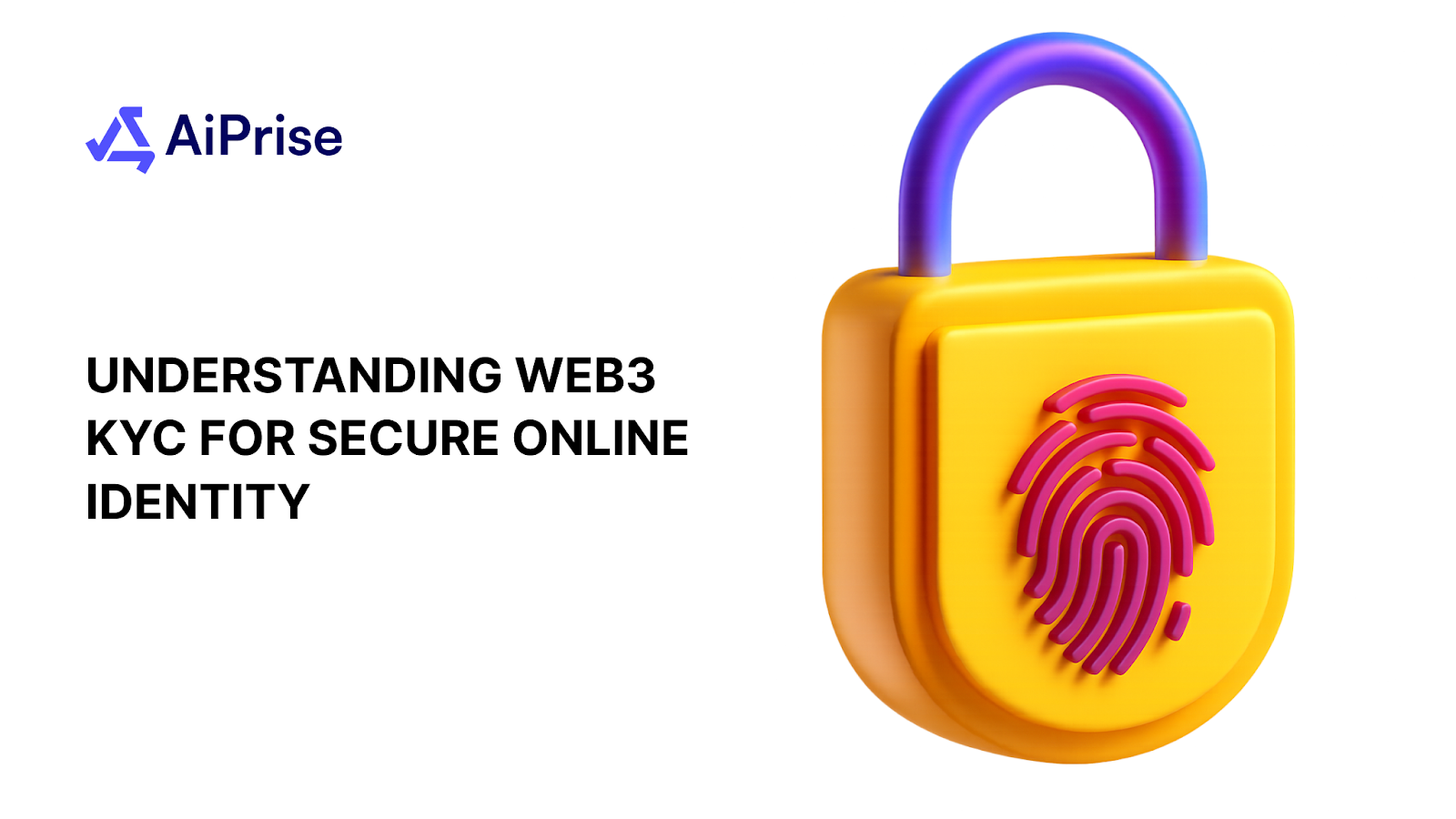
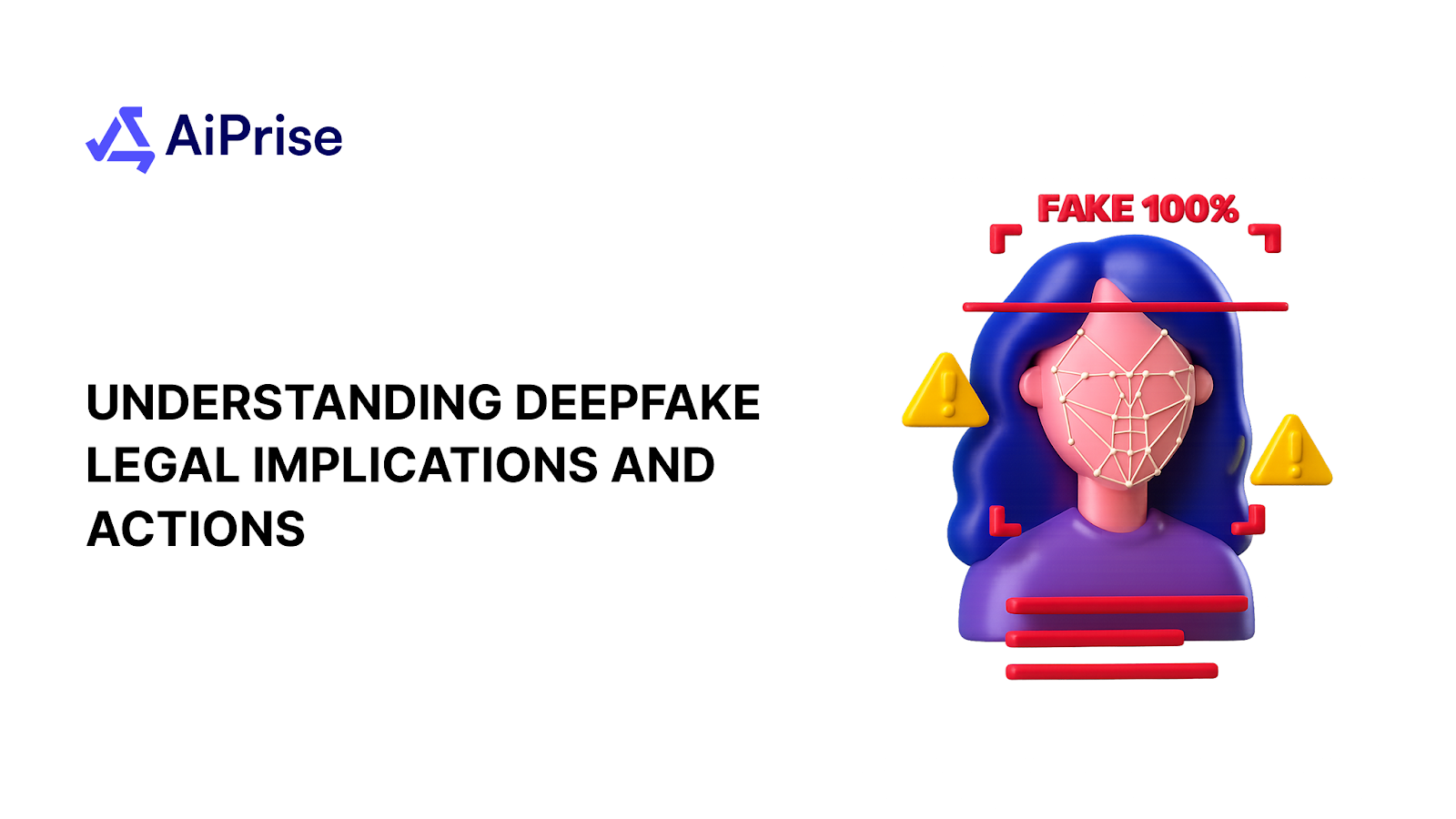
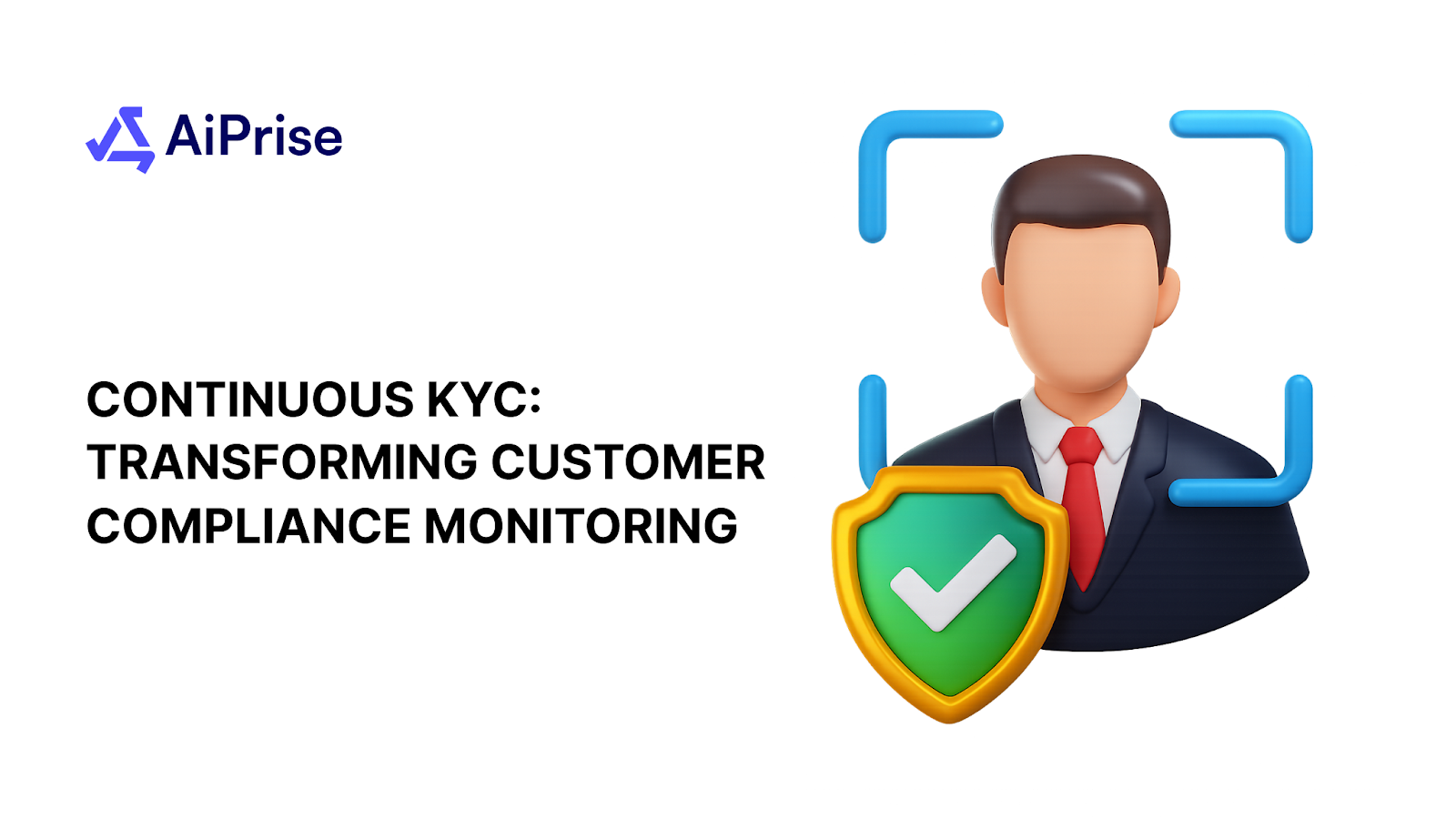
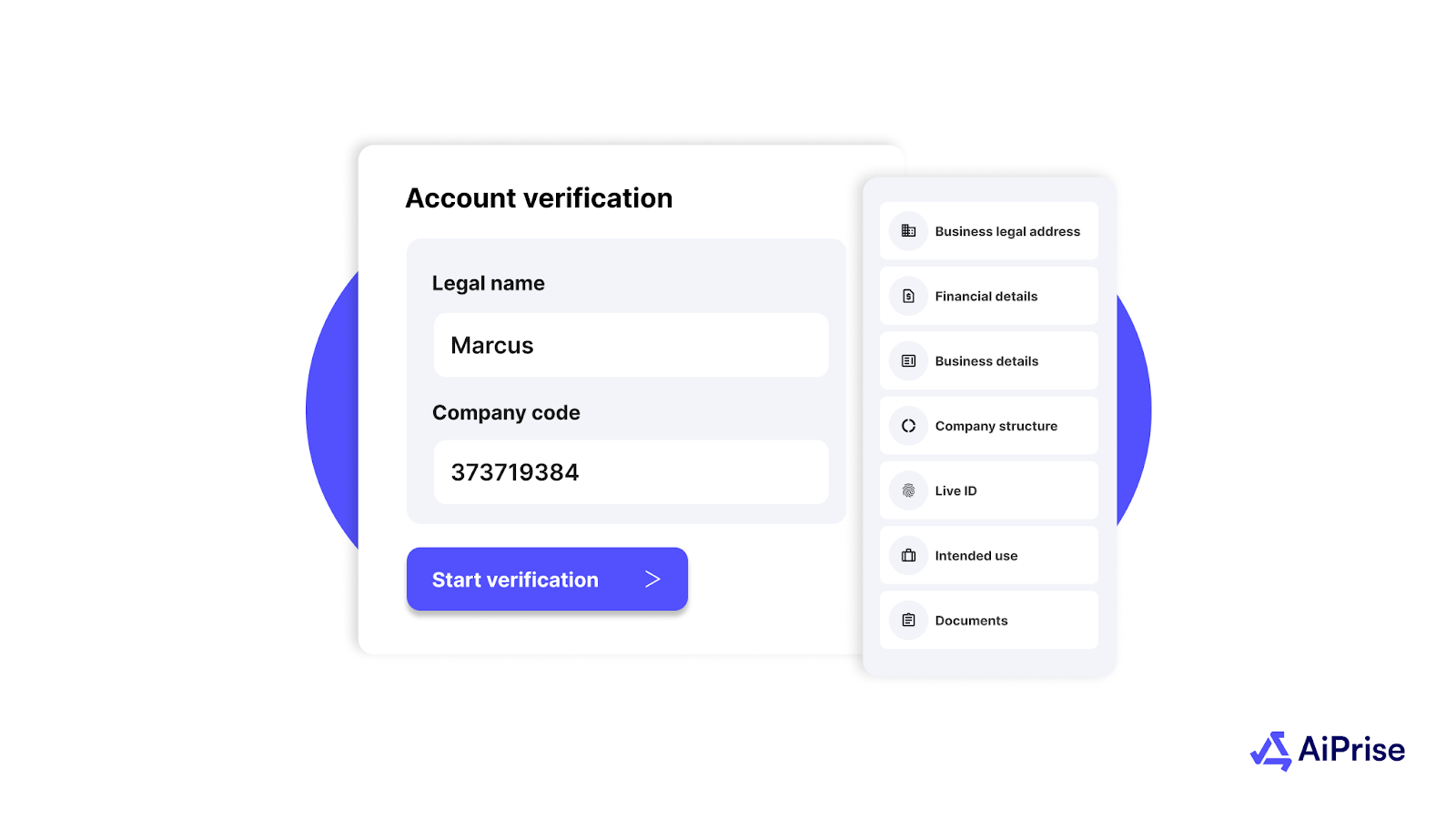
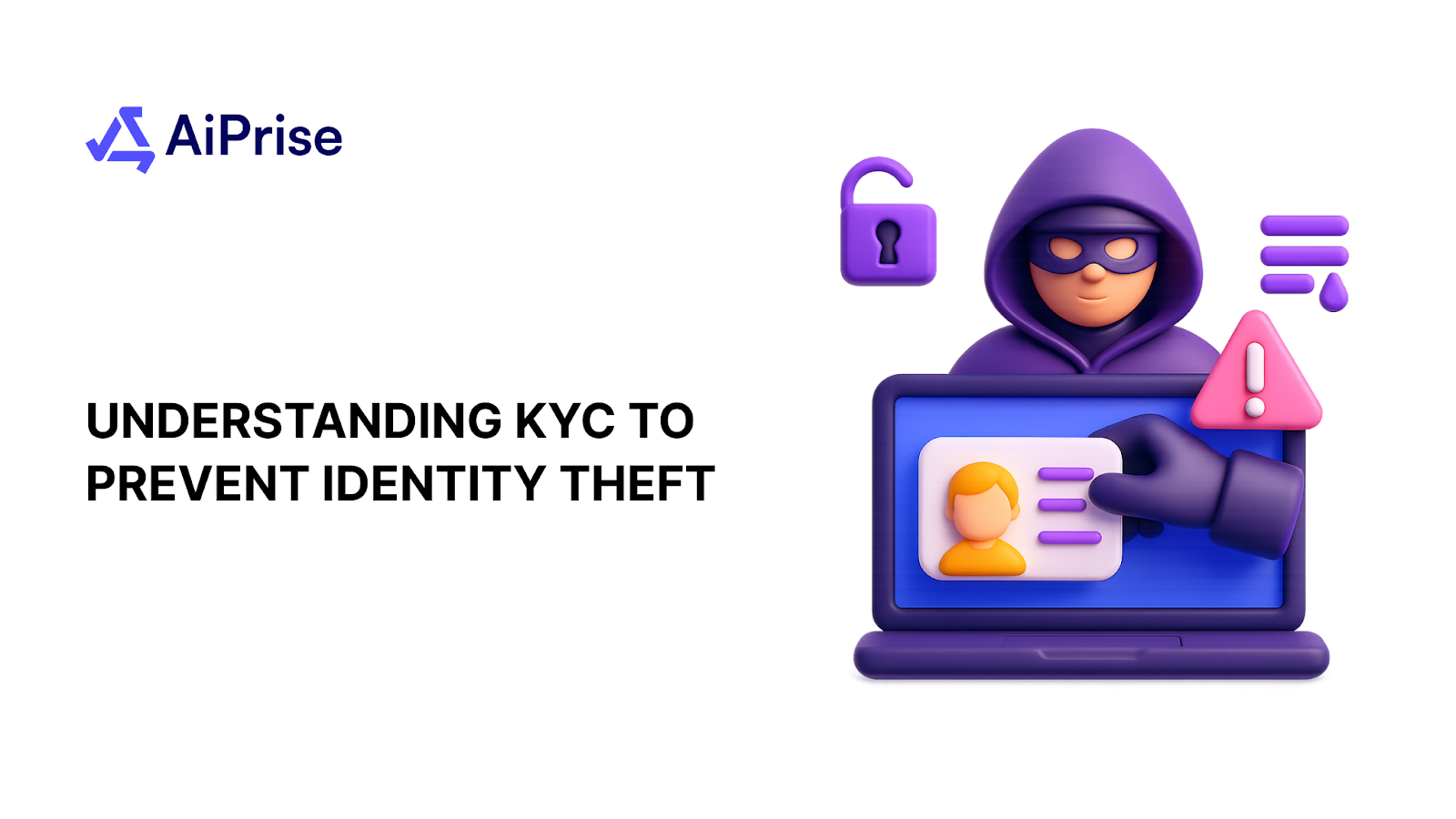


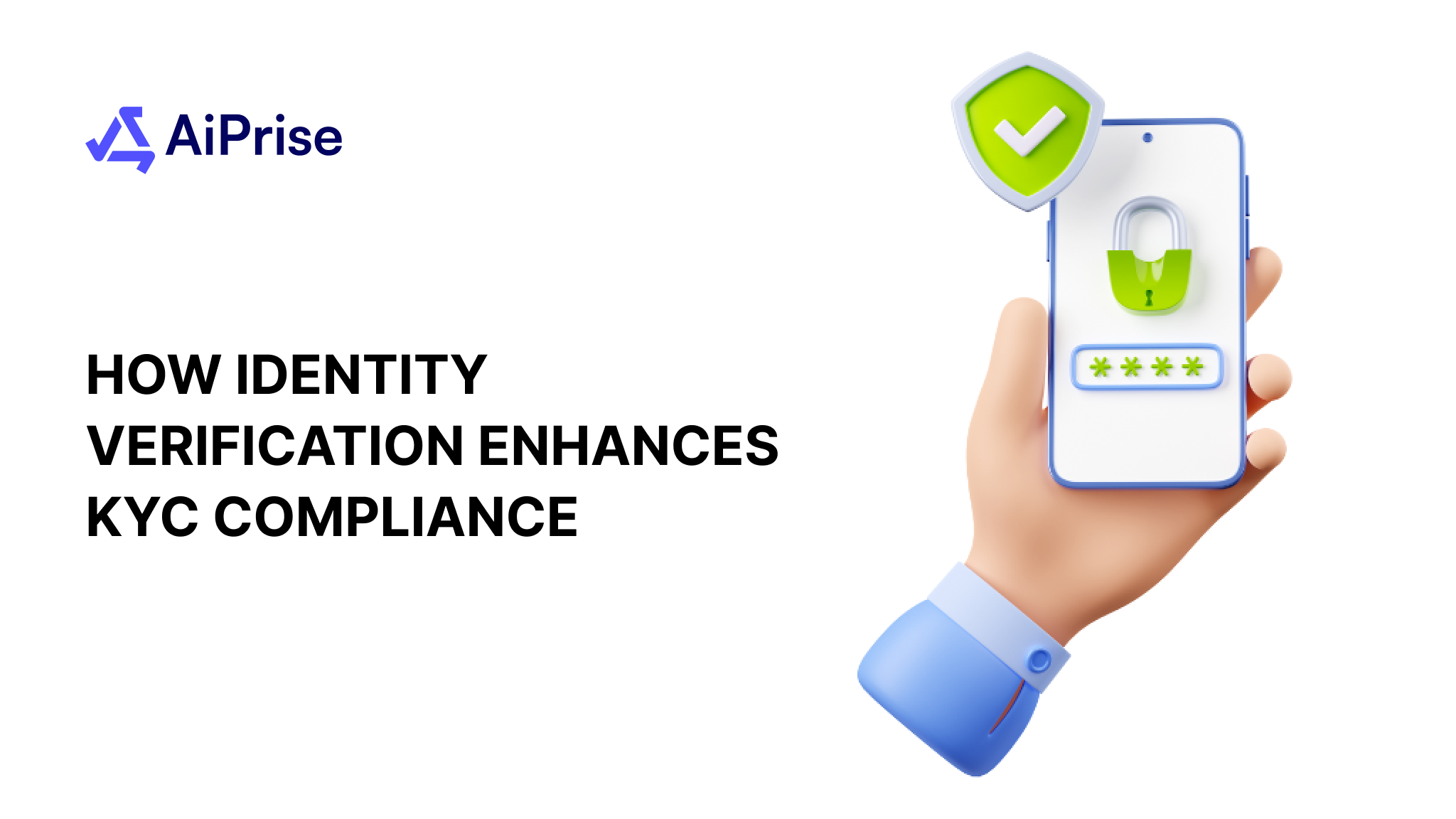

.png)

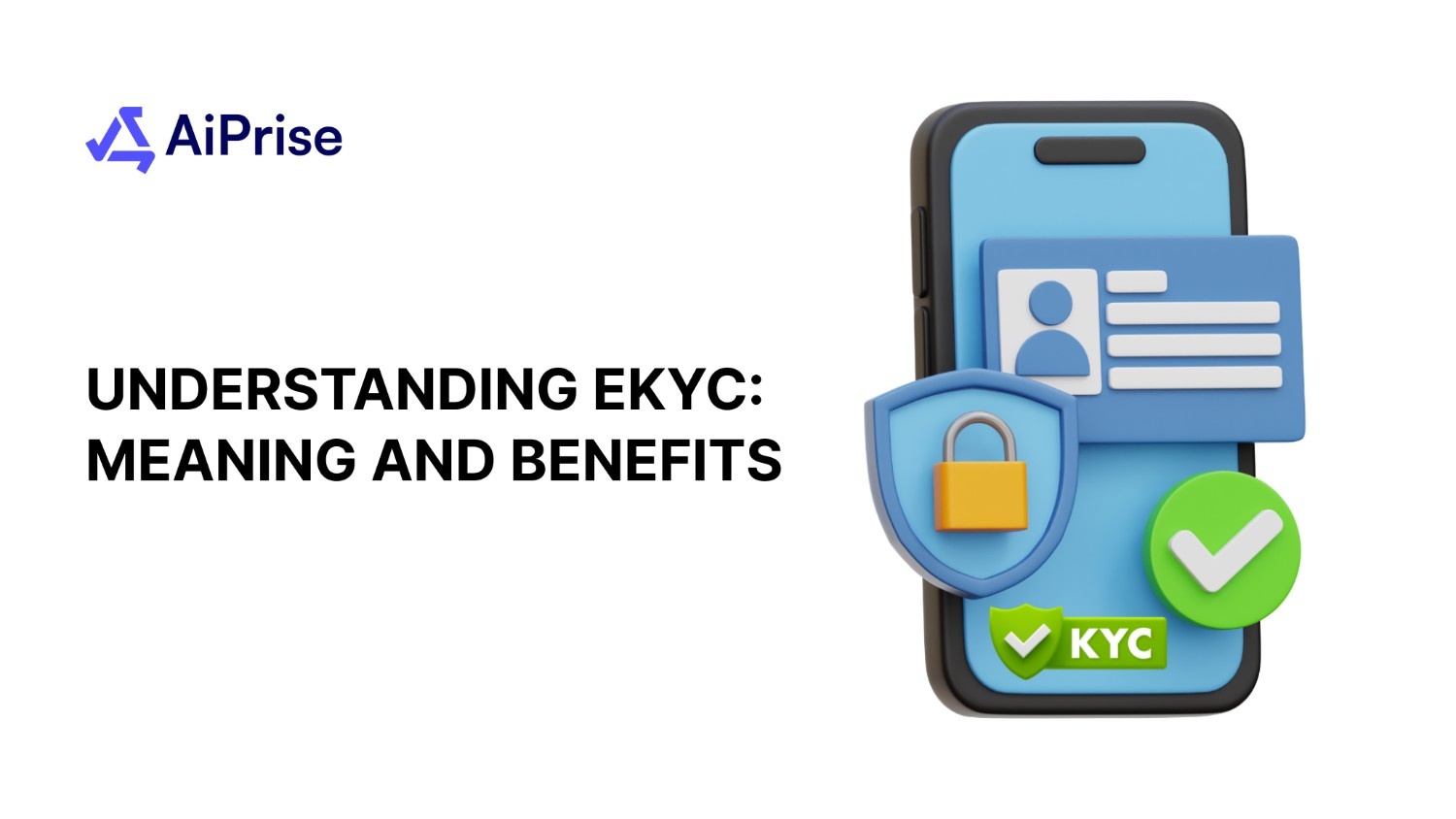

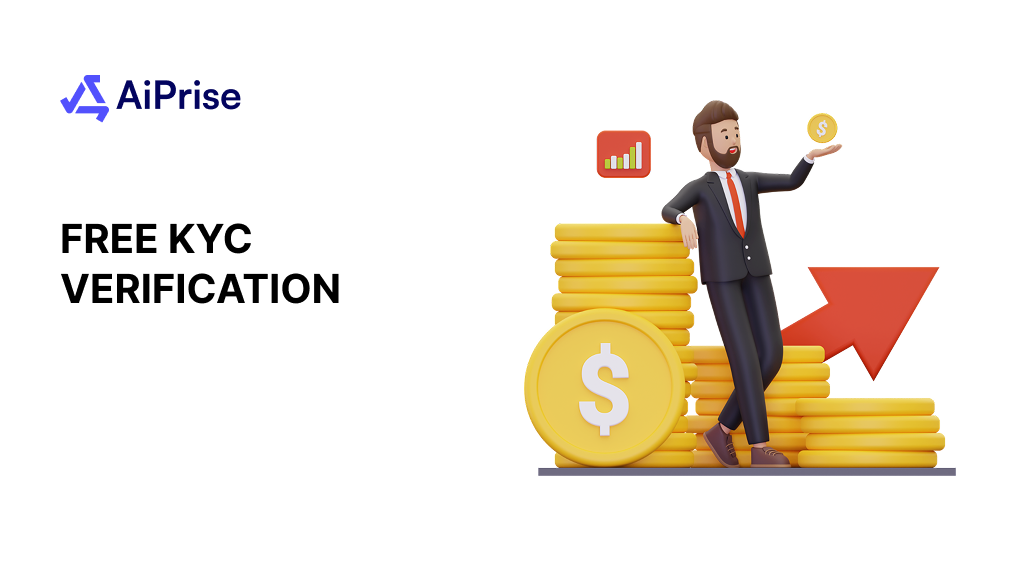
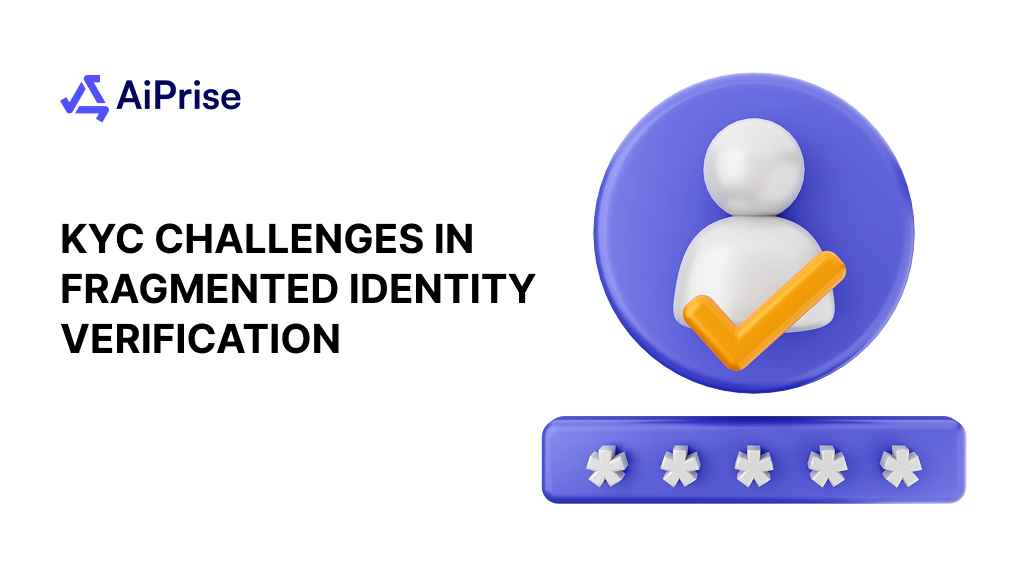
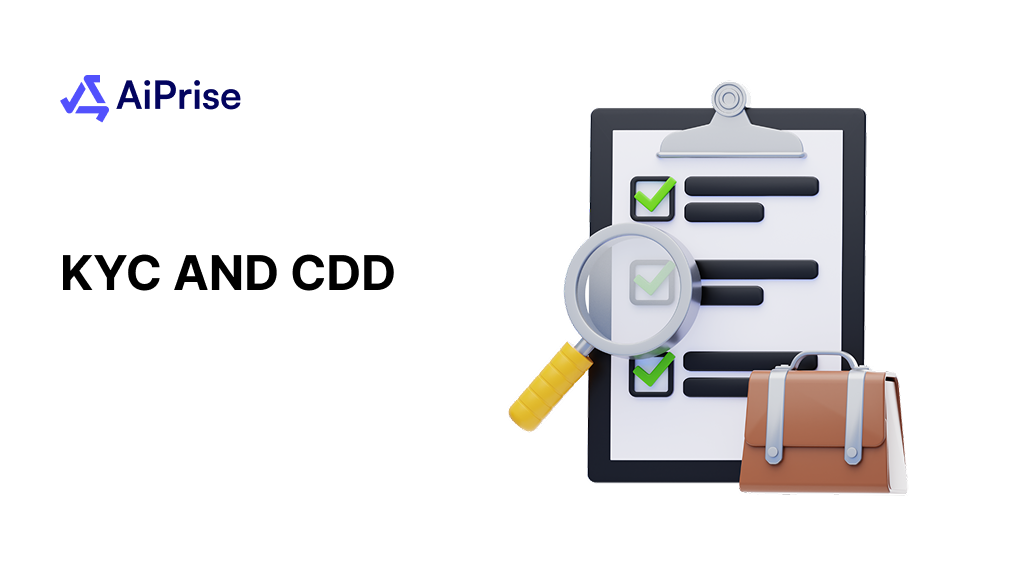








.png)






















